The Dominican Republic
Those of you who travel to the Dominican Republic as part of one of our tournaments will have the opportunity to visit several natural and historic landmarks in and around Santo Domingo, the nation’s capital. We also have a full staff of licensed historical guides that will provide information to our athletes during their visit to the different sites. Explore the information below to discover more about Santo Domingo and its beautiful sites.
Santo Domingo
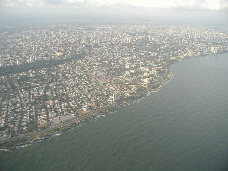
The old Colonial City is home of the first cathedral, first hospital, first monastery, first university and first court of law, all of which survive in some restored form. But it is not a dead city. In the evening, after the tour groups depart, shuttered buildings turn into sidewalk cafes that breathe a whole new life into the streets and plazas. Situated beside the Ozama River, the Colonial City with its cobblestone streets, medieval fortresses and palaces is a walker’s dream
The old Colonial City is home of the first cathedral, first hospital, first monastery, first university and first court of law, all of which survive in some restored form. But it is not a dead city. In the evening, after the tour groups depart, shuttered buildings turn into sidewalk cafes that breathe a whole new life into the streets and plazas. Situated beside the Ozama River, the Colonial City with its cobblestone streets, medieval fortresses and palaces is a walker’s dream
Across the Ozama, looking like the flames of a departing rocket ship is the huge Columbus Lighthouse containing the purported remains of the explorer. The monument definitely is worth visiting after dark. The Old City can be enjoyed day or night.
There are many possible ways to stroll the Old City. This route is a 6 block-long loop that starts at the fortress of Diego Columbus, son of Christopher.
Ozama Fortress
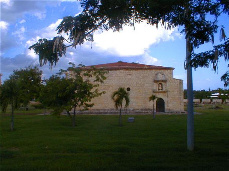
El Mercado Modelo

Museo Alcazar de Colon
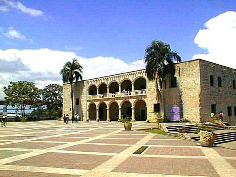
The building was abandoned in 1770 and turned into a garbage dump. Cave-ins in 1809 and 1835 left the building in ruins. Skilled stonecutters first restored it in 1957, with added refinements made during several later restorations. Serious attempts were made to remain faithful to the original construction and décor.
The fortress is now a museum with furnishings that were provided by Spain -twice. The first set of furnishing and decorations were mostly destroyed by American gunfire and bombing during the 1965 invasion, requiring their replacement by the Spanish government.
Plaza de Espana

The street bordering the plaza is closed to traffic. In the past it was the Plaza de Armas, where soldiers paraded. Before that it was the conuco (cultivated fields) of the native Tainos.
Columbus Lighthouse

Altos de Chavon
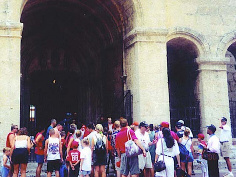
Los Tres Ojos
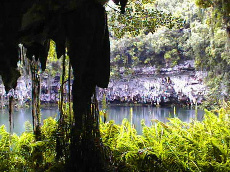
A very steep staircase plunges into an unforgettable Land of the Lost, a strenuous workout far from over with the multiple
Click for larger image
levels of vantage points for exploring the first cave. A verdant forest has thrived in the terrarium-like environment dank with tropical humidity. Off the central plateau, paths descend toward different side pools shimmering with crystal-clear fresh waters.
The staircase on the southern border leads towards a mammoth entry to the second eye, which has the best cave qualities with stalactites jutting overhead. At far edge of the pool is the launching point for viewing the final eye that shouldn’t be missed, regardless of potential wait.
For RD10, a small raft on a rope pulley shuttles guests across the cave. Not until reaching the other side could I fully appreciate immenseness of the second cave, the craggy opening naturally framing the first eye beyond. A short trail leads to a viewing deck of the third eye, which contains salt water.
National Pantheon
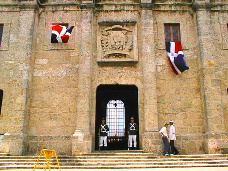
This Jesuit church, dating back to the 18th century, was designated the National Pantheon in 1956; and three years later it was remodeled and adapted to serve this purpose. Since then, the remains of famous Dominicans have been brought here. The church’s construction is composed of three distinct naves. The central nave is the widest and is covered by a vaulted ceiling covered with a mural. The side naves are built like small chapels, each with a beautiful domed roof. Hanging from the central vault is a lamp which was given to the church by the Spanish head of state, Francisco Franco.
The Cathedral

This cathedral, the first in the New World, is the most important monument in Santo Domingo. It was constructed from 1514 to 1546. Its complete translated name is the Holy Metropolitan Cathedral Basilica of our Lady Holy Mary of the Incarnation. Its mostly late-Gothic architecture also includes Romanesque characteristics. The main façade was built out of coral rock. The chapels were built later than the main temple, and until 1992 one chapel housed the remains of Christopher Columbus, which are now in the Columbus Lighthouse. Please note that you must be appropriately dressed to enter the cathedral.